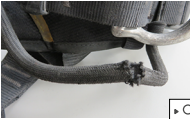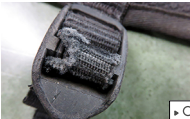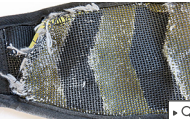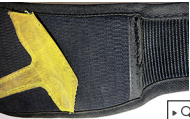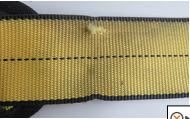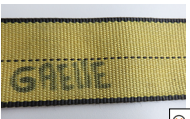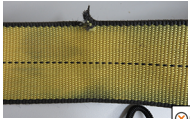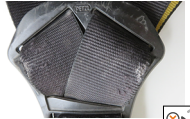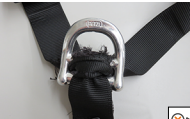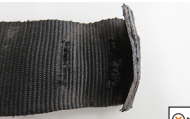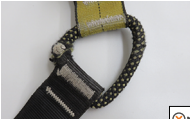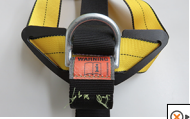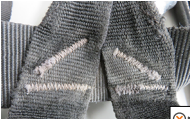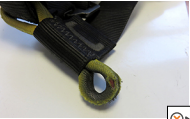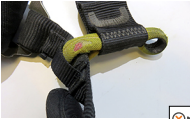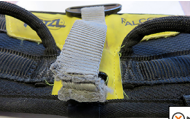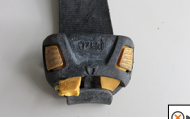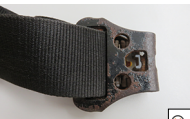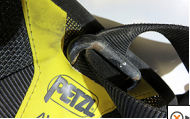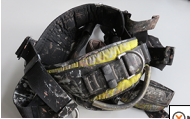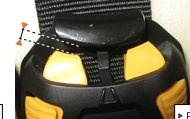Title Page
User Information
-
Name
-
Address
-
Identifier
PPE Information
-
Model
-
Serial Number
-
Year of Manufacture
-
Date of Purchase
-
Date of First Use
-
1. Known product history: Usage conditions or exceptional event during use (examples: fall or fall arrest, use or storage at extreme temperatures, modification outside manufacturer's facilities...) :
Preliminary product history
-
• Verify the presence and legibility of the serial number and the CE mark.
• Verify that the product lifetime has not been exceeded.
• Compare with a new product to verify there are no modifications or missing parts. -
Overall preliminary observation assessment
-
Please create an issue using the QR code below. Include this link (https://marketplace.safetyculture.com/petzl-astro-bod-fast-international-version-colour-black-yellow/) to replacement harness to ensure correct replacement is provided and to reduce time to replace.
-
Checking the condition of the straps
-
• Check for cuts, swelling, damage and wear due to use, to heat, and to contact with chemicals. Check the waistbelt straps, leg loops, leg loop/waistbelt linkage and shoulder straps, if present. Be sure to check the areas hidden by the buckles.
• Check the condition of the safety stitching on both sides. Look for any threads that are loose, worn, or cut. The safety stitching is identified by thread of a different color than that of the webbing.
• Verify that hems are present on the strap ends. -
Overall strap condition assessment
Checking the attachment points
-
• Check the condition of the metal attachment points (marks, cracks, wear, deformation, corrosion...).
• Check the condition of the textile attachment points (cuts, wear, tears...).
• Check the condition of the plastic attachment points (cuts, wear, tears...).
• On the multi-standard NAVAHO and AVAO harnesses, check the fall arrest indicator. The indicator shows red if the dorsal attachment point sustains a shock load greater than 400 daN. -
Overall attachment point assessment
Checking the condition of the adjustment buckles
-
• Check the condition of the DOUBLEBACK adjustment buckles (marks, cracks, wear, deformation, corrosion...). • Check the condition of the FAST adjustment buckles (marks, cracks, wear, deformation, corrosion...).
• Check that the straps are correctly threaded, with no twists.
• Verify that the buckles operate properly. -
Overall adjustment buckle assessment
Checking the condition of the comfort parts
-
• Check the condition of the waist, leg and shoulder foams (cuts, wear, tears...).. • Check the condition of the elastic and/or plastic keepers (cuts, wear, tears...). • Check the condition of the leg loop elastics (cuts, wear, tears...).
• Check the condition of the equipment loops (cuts, wear, tears...). -
Overall comfort part assessment
Checking the condition of the chest/seat harness connector (if any)
-
• For connector inspection, see the inspection form for your connector model at Petzl.com.
• Gated attachment point: verify that the screws on the gated attachment point are present and properly tightened. • If the harness features a chest/seat harness connector, make sure that it is present.
• Verify that the connector is the correct model and that it is correctly attached to the harness. -
Overall assessment of chest/seat harness connector
Checking the condition of the CROLL rope clamp (if any)
-
• For rope clamp inspection, see the inspection form for your rope clamp model at Petzl.com.
-
Overall CROLL rope clamp assessment
Examples of worn harnesses that should be repaired or retired
-
Cut equipment loop
-
Cut load adjustment strap
-
Damaged protective fabric
-
Damaged protective fabric
-
Reversed bar
-
Damaged webbing
-
Marking on webbing
-
Cut webbing
-
Damaged webbing
-
Damaged webbing
-
Unstitched hem
-
Damaged attachment point
-
Fall indicator is visible
-
Damaged safety stitching
-
Damaged attachment point
-
Damaged attachment point
-
Damaged attachment point
-
Worn out D-ring
-
Broken buckle
-
Corrosion
-
Corrosion
-
Traces of paint
-
Buckle not working







